What Color Does Wine and Fuchsia Make Mixed Drinks
Originally posted 2018. Reference guide below last updated October 2021.
It's no secret that I'm a big fan of edible flowers. A large percentage of the cocktails I share everyday here and on Instagram feature floral garnishes, and I'm moderately obsessed with wandering around in the field behind our house looking for things I can eat, turn into a syrup, or use as a garnish.
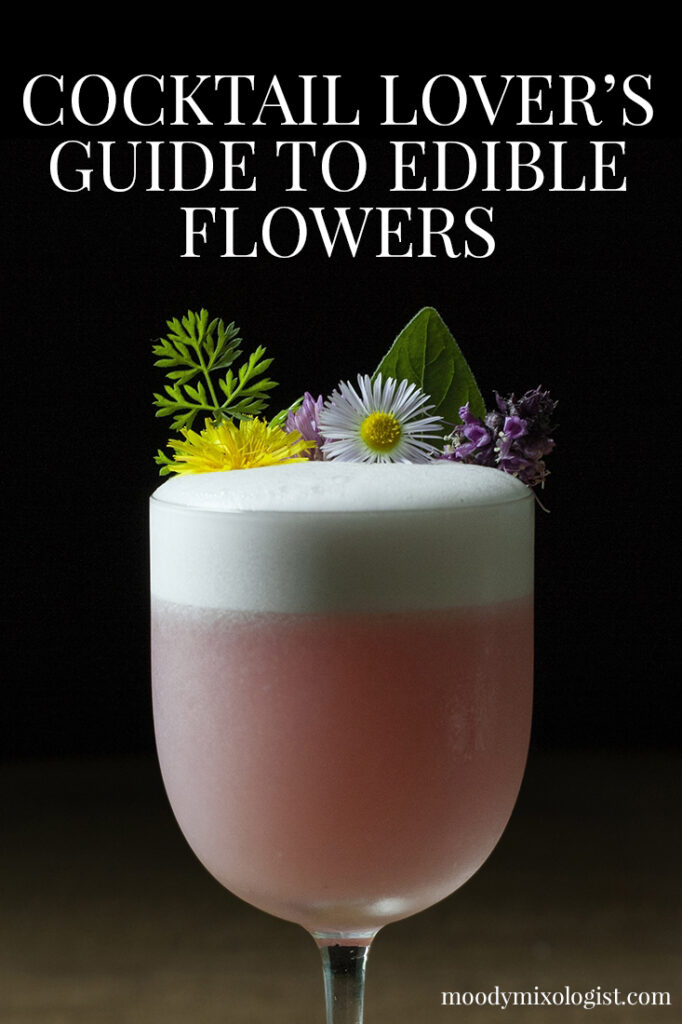
There's just something so naturally appealing about flowers. They can transform a tasty but visually lacking drink into a masterpiece, take a cake from boring to extraordinary, or add unique, delicate, sweet or vegetal flavors to a weeknight dinner.

With the last few weeks of summer closing in, I was inspired to assemble a collection of some of the easy-to-identify edible flowers and plants from around my yard and create a cocktail inspired by all of this summer's foraging. Below you'll find a list of common edible flowers that make for gorgeous garnishes.
Some you can find in your backyard, others are easy to find in stores or online. I recommend ordering online from Gourmet Sweet Botanicals. I've always had a good experience with them and they have a wonderful variety of flowers and other plants to choose from.
You can also sometimes find edible flowers in a clam shell case with the herbs at health food stores like Whole Foods. They are not always available, but I've had good luck ordering them on occasion through Amazon Prime / Whole Foods delivery this past year.


Below I've started a list of some of the edible flowers and plants I'm familiar with. This list is by no means exhaustive, and mainly focuses on what's readily available to me or native to New England.
I will continue to add to the list as I come across new flowers and I'll update with more photos as I have the opportunity to shoot them!
A List of Edible Flowers to Elevate your Garnish Game
IMPORTANT: Never eat a plant or flower if you cannot identify it with absolute certainty. Many flowers are toxic and may look like those that are edible. Use common sense and if in doubt, don't eat it! Flowers from florists or grocery stores have been treated with pesticides and should not be eaten unless labeled as edible.
For quick reference, here is a list of some common plants that ARE NOT safe to eat: rhododendron, azalea, daffodil, hydrangea, ranunculus, lily, lily of the valley, foxglove, oleander.
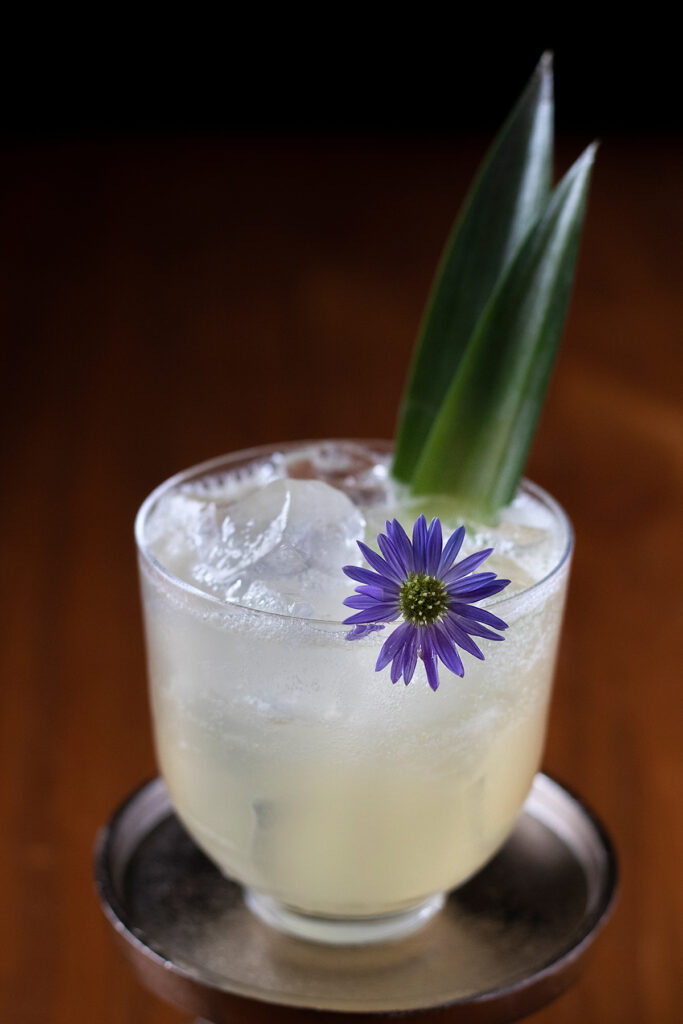
Aster, New England
Symphyotrichum novae angliae. Both the leaves and flowers are edible.
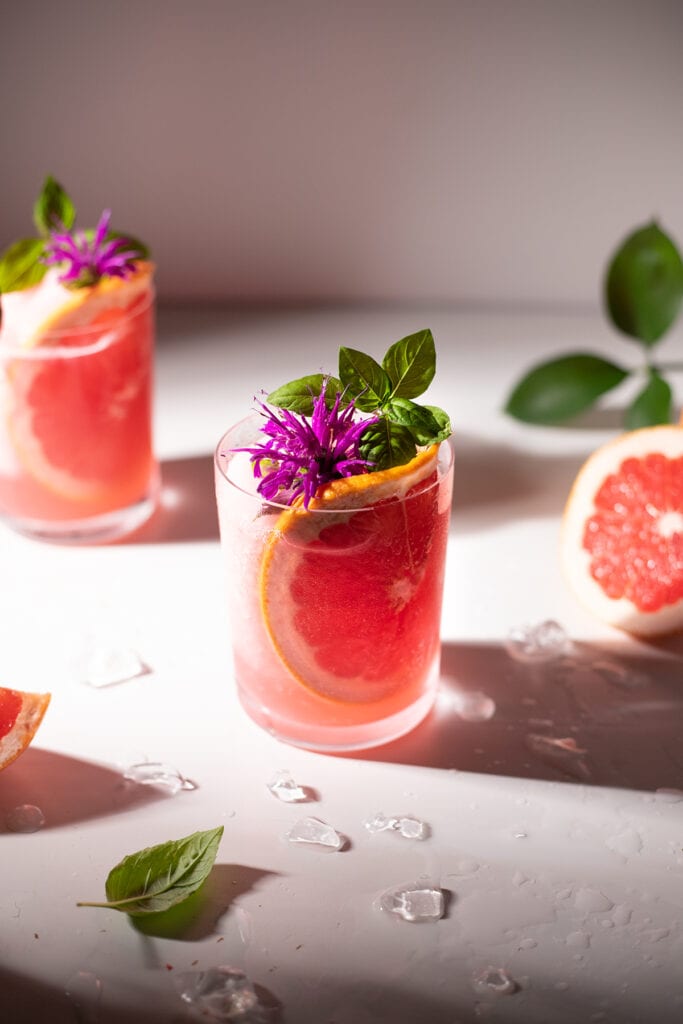
Bee balm
Monarda didyma. Bright pink to purple colored blossoms. Also called Bergamot because of the scent and flavor resemblance to the citrus fruit of the same name. Red blossoms have a minty flavor.

Bluets
Houstonia coerulea. Tiny blue to white flowers with four petals. Very mild vegetal flavor.
Borage
Borago officinalis. Beautiful blue blossoms with a mild cucumber flavor.
Calendula
Calendula officinalis. Also called Marigold. Orange to yellow colored blossoms. Flavor can range but is somewhat characteristic of saffron.
Carnation
Dianthus caryophyllus. Carnations are a species of Dianthus. Wide variety of colors. Petals have sweet to spicy flavor. Cut the white base of the petals off to avoid bitter flavors. One of the ingredients in the mysterious Chartreuse secret recipe!
Chamomile
Matricaria recutita. Slightly bitter, sweet, earthy, somewhat floral flavor.
Chrysanthemum
Chrysanthemum coronarium. A wide variety of colors. Slightly bitter, vegetal flavor with a strong green scent. Eat petals only.
Columbine
Aquilegia canadensis (red) and aquilegia caerulea (Colorado blue) only. Flowers only.

Cornflower
Centaurea cynaus. Also called Bachelor's Button. Bright blue and pink blossoms with clove-like flavor.
Cosmos
Cosmos sulphureus, Cosmos bipinnatus.
Dahlia
Edible petals. Flavors range from mild water chestnut to apple to carrot.
Dandelion
Taraxacum officinalis. Fluffy, yellow flowers. Honey flavor when flowers are small and young.

Daylily
Hemerocallis. Orange and yellow, six petaled blooms. Slightly sweet, lettuce-like flavor. I love to toss these in salads. Use caution when foraging as true LILIES are not safe to eat.
Dianthus
Wide range of colors and varieties. Often a somewhat spicy flavor and aroma. Consume petals only, avoid the bitter tasting white ends of the petals.
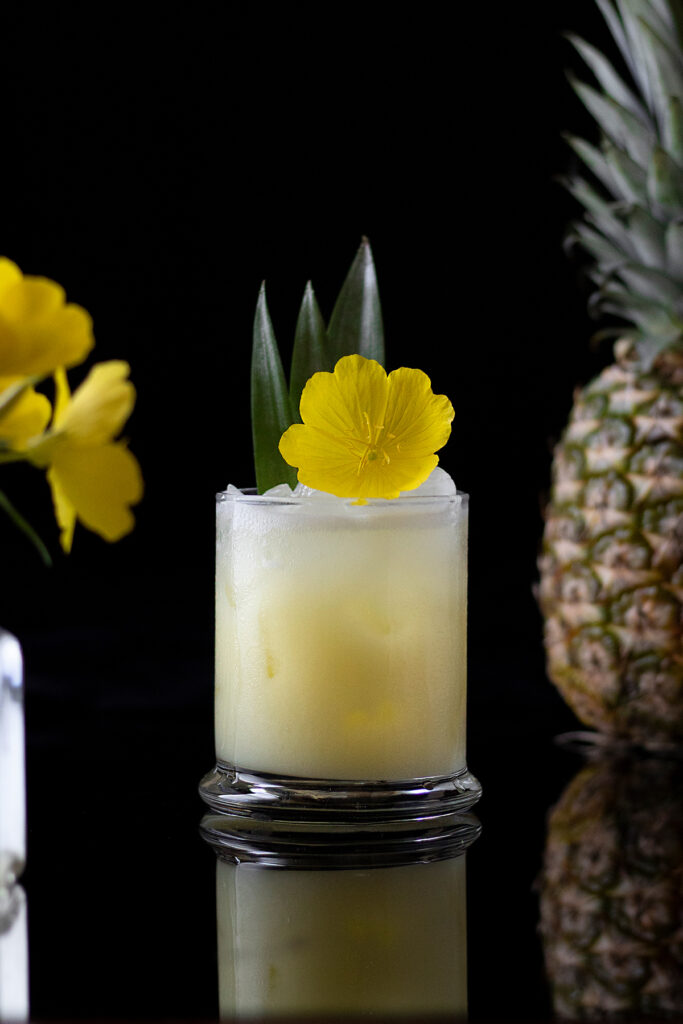
Evening primrose
Oenothera biennis. Also called Sundrop. Beautiful yellow, four petaled blossoms. Slightly sweet flavor.

Fleabane
Erigeron annuus. Tiny white, daisy-like flowers with many spiky white petals. Mild, vegetal flavor.
Forsythia
Forsythia x intermedia. Clusters of small, bright yellow, four petaled flowers. Blooms early in spring. Honey-like to green in flavor.

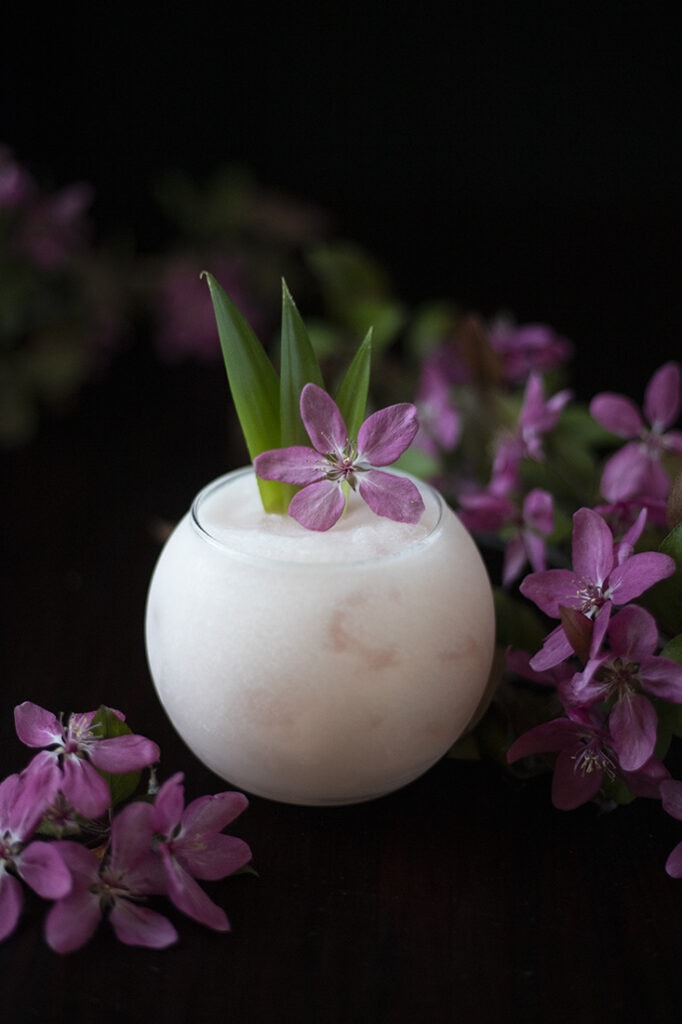
Pink crabapple blooms.
Fruit blossoms
(Strawberry, raspberry, blackberry, cherry, apple, pear): Many are edible, in moderation. Research individual varieties for more information.
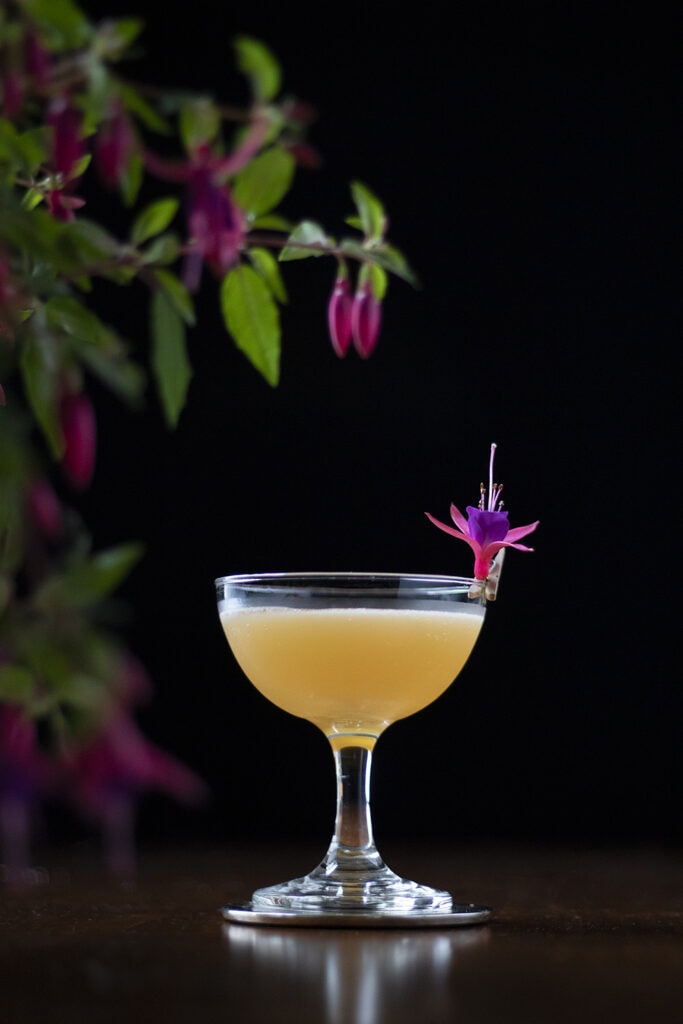
Fuchsia blossom on a rhum agricole daiquiri
Fuchsia
Exotic, two tone blossoms. Both flowers and berries are edible.
Geranium
Pelargonium. Scented geraniums are edible and taste like their individual scent variety.

Goldenrod
Solidago cnadensis. Long clusters of tiny, bright yellow flowers. All aerial parts of the plant can be eaten.

Hawkweed
(Yellow and orange): Hieracium. Related to dandelions. Also called "devil's paintbrush". Bright yellow or orange fluffy blossoms.
Herb blossoms
(Basil, thyme, mint, oregano, sage): Research individual varieties for more information. Often very concentrated flavors and aromas.
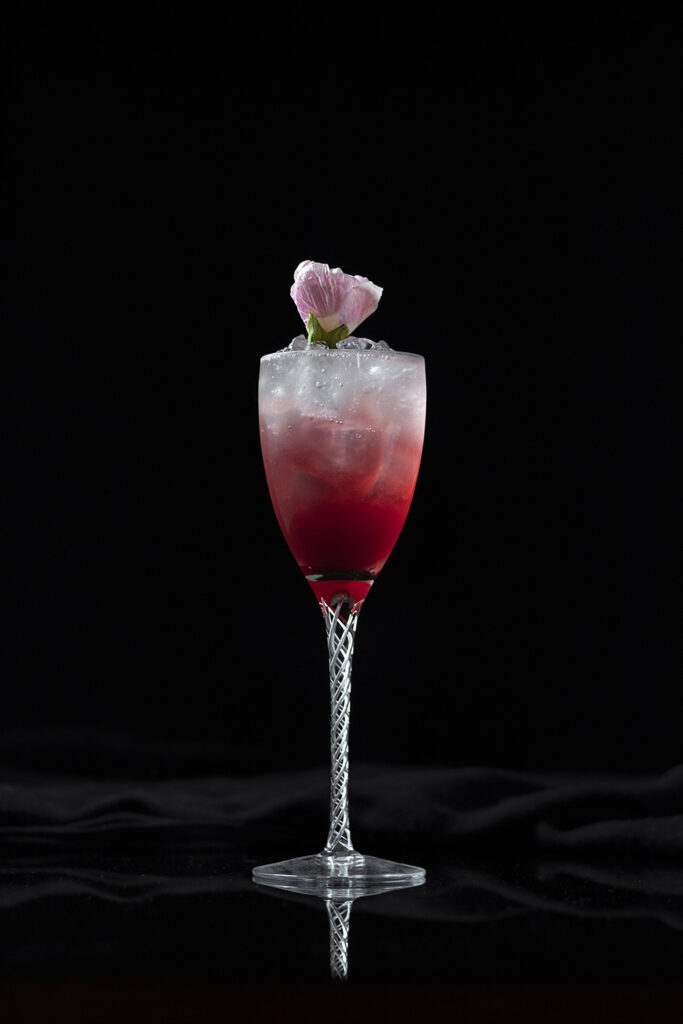
Hibiscus
Hibiscus rosa-sinensis. Blossoms range from white to deep red. Sweet, tart, acidic flavor.
Hosta
All varieties cultivated in the United States are edible. Colors range from white to purple. Mild, vegetal, slightly bitter flavor.
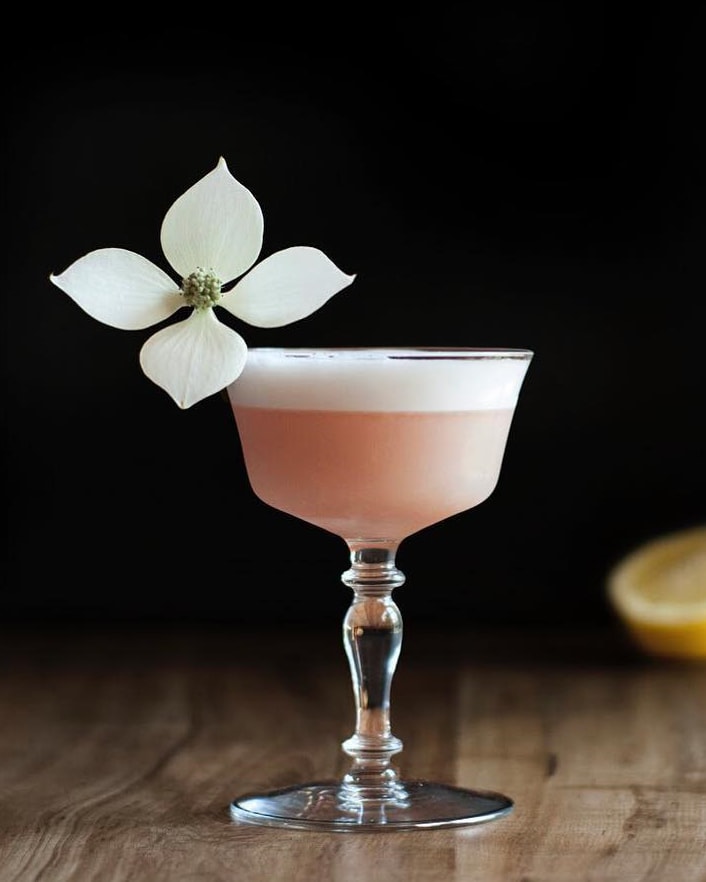
Kousa dogwood blossom garnish
Kousa dogwood
Cornus kousa. NOTE: Most dogwood varieties are NOT edible. The kousa dogwood has edible flowers and berries. White, rigid flowers with four petals.
Lavender
Lavandula angustifolia. Pretty, tall purple flowers. Clean, sweet, floral flavor.
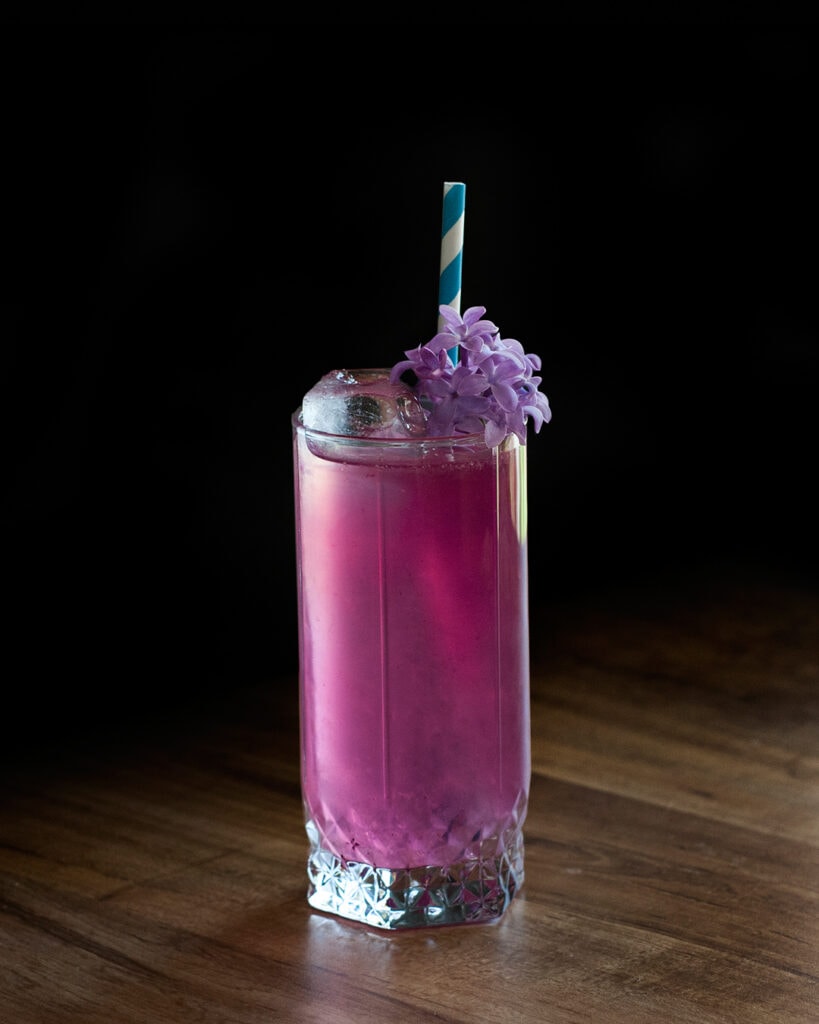
Lilac
Syringa vulgaris. Large clusters of pale purple or white blossoms. Strong floral scent and flavor.
Magnolia
Magnolia grandiflora. Intense flavor comparable to scent. Best pickled.
Marigold: See Calendula.
Nasturtium
Tropaeolum majus. One of the most popular edible flowers. Wide range of colors. Peppery flavor.
Orchid
All flowers of the family Orchidaceae are considered safe to eat, although some may cause stomach upset.
Pansies & violas
Viola x wittrockiana. Many colors available. Very mild flavor, sometimes slightly minty. Some are sweet, some are more grassy.
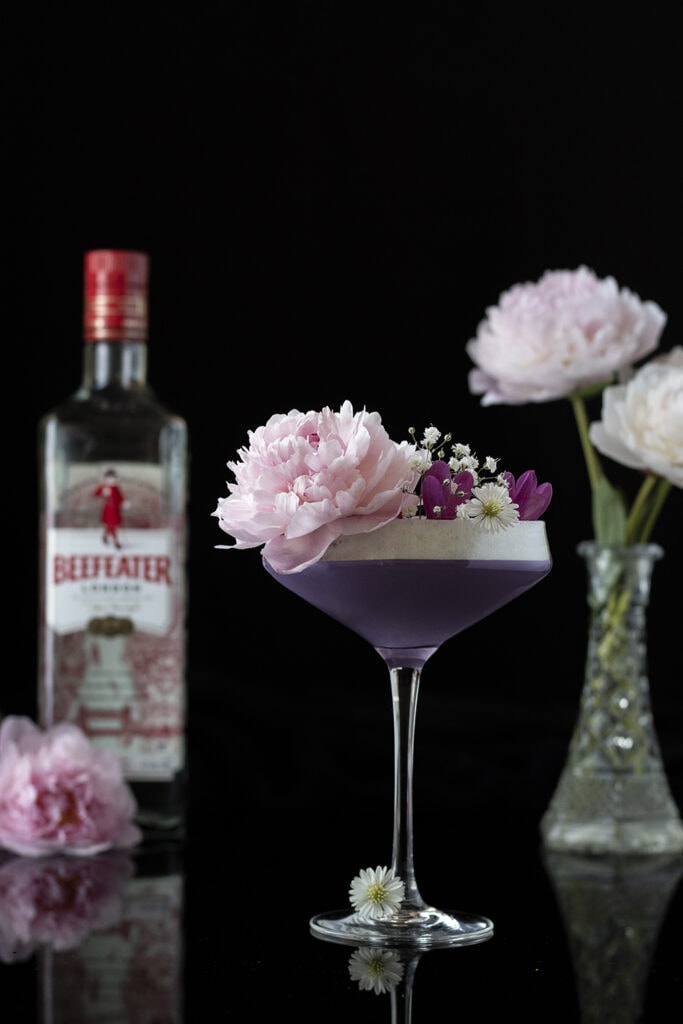
Large pale pink peony garnish surrounded by other small edible flowers.
Peony
Paeonia lactiflora. Variety of colors. Petals are fragrant and slightly sweet.
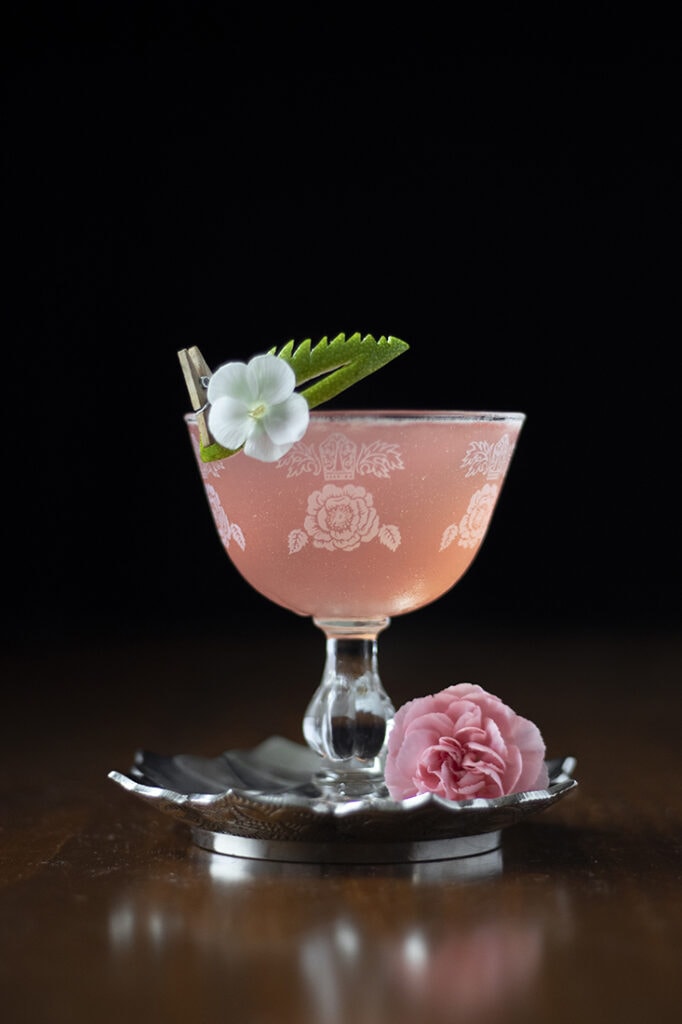
White phlox flower garnish (pink blossom is a carnation).
Phlox
Phlox paniculata. PERRENNIAL variety ONLY. Tall, brightly colored flowers in clusters. Spicy flavor.
Queen Anne's Lace
Daucus carota. Also called Wild Carrot. Lacey, white blooms. Mild carrot-like flavor. Take care not to confuse with other similar looking plants that are toxic. Look for a hairy stem.
Red clover
Trifolium. Sweet, licorice-like flavor.
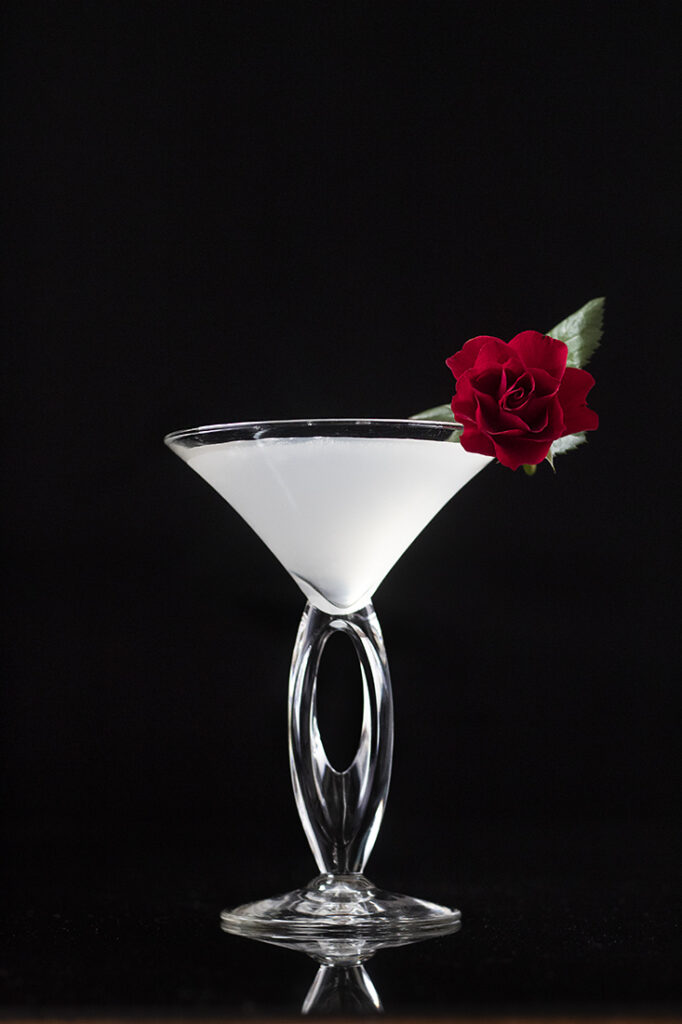
Rose
Rosa rugosa, R. gallica officinalis. Wide range of colors. Characteristic flavor and aroma.
Sunflower
Helianthus annus. Petals and young unopened buds are edible. Petals have a bittersweet flavor.
Squash blossoms
Curcubita pepo. Yellow blossoms. Mild, squash-like flavor.
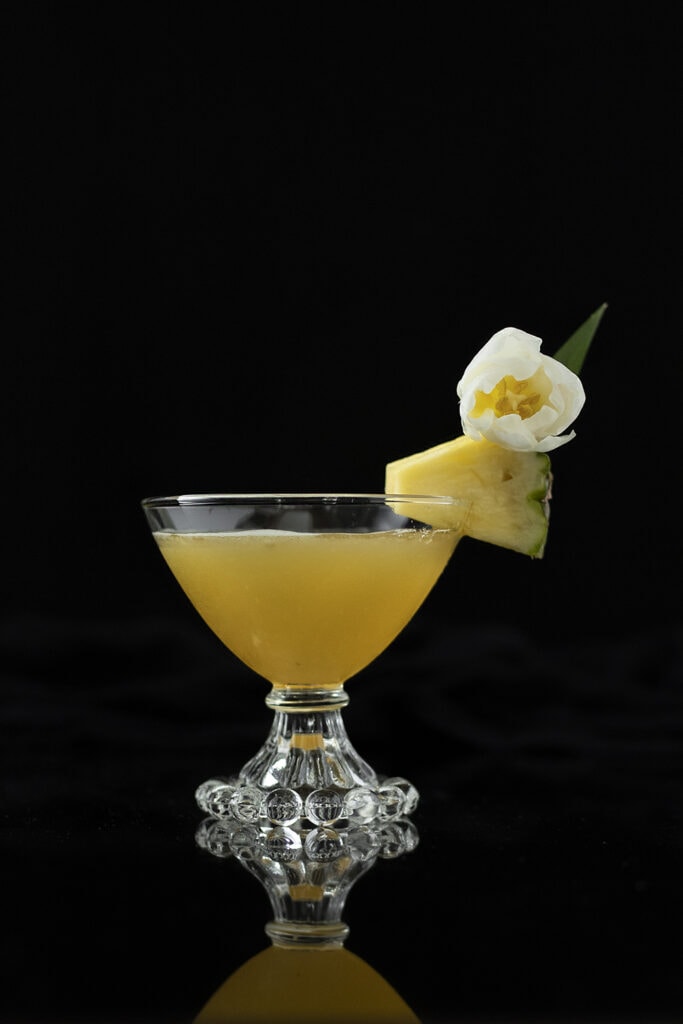
White tulip garnishing a Pago Pago cocktail
Tulip
Tulipa. Only the petals are edible. Pea-like or lettuce-like flavor. Vegetal. Never consume the bulbs.
Violet
Viola. Small violet-purple-blue flowers with a very sweet, floral flavor.
Wisteria
All varieties grown in the United States produce edible flowers, but ONLY the flowers, other parts are VERY poisonous and should never be consumed! Pale purple flowers that grow in large clusters. Very perfumey, characteristic flavor. Green parts have a bitter flavor.
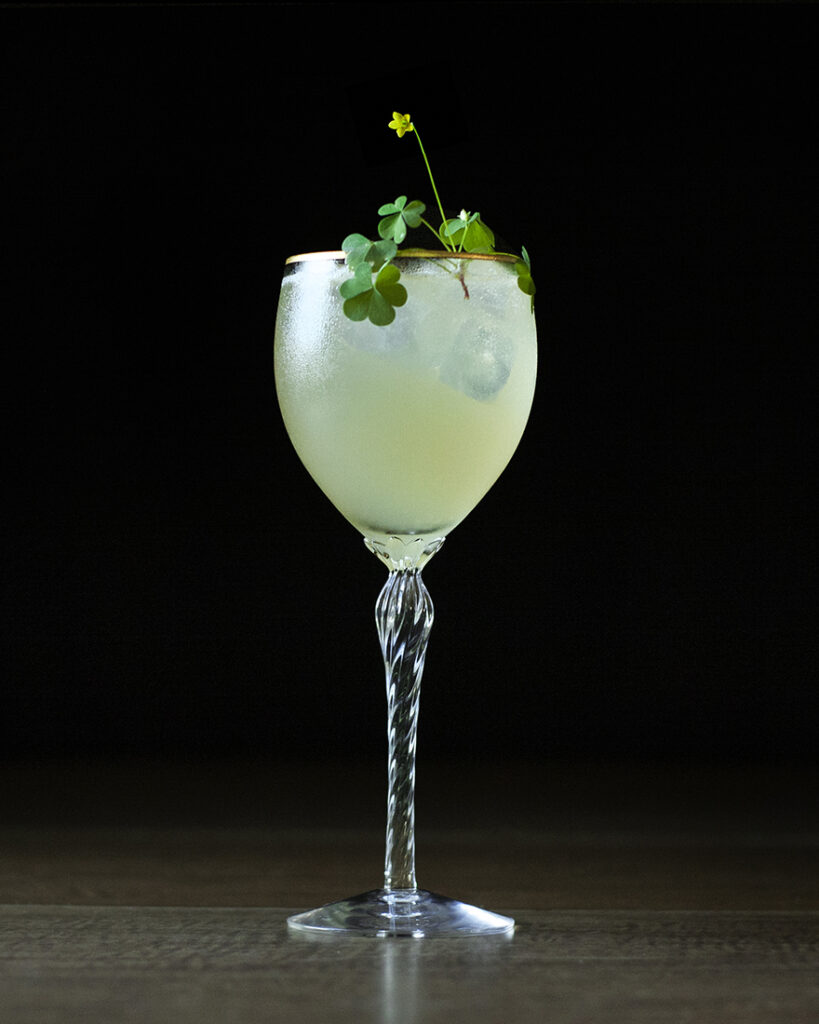
Wood sorrel leaf and flower garnish
Wood Sorrel
Oxalis. Very easy to identify with heart-shaped leaves and small yellow flowers. No toxic plants are similar looking. Classic cartoon "clover" appearance (true clover actually have oval leaves, not heart-shaped leaves). Sour, lemon-y flavor. All parts are edible.
Yarrow
Achillea millefolium. Clusters of small white flowers with yellow centers. Sweet, herbal and bitter flavor.
Photos from my foraging adventures












In addition to being top notch garnishes, wild edibles make a lovely addition to salads, soups, crudite or charcuterie platters.
I gathered a basketful, gave them a thorough shake (to remove any lurking little creatures), a good rinse, and a gentle pat dry, and served them as a topping for a large garden salad with an oxymel-based dressing.
What is an oxymel?
Oxymels are a delicious way to preserve the flavors of summer and create herbal or floral infusions to use in cocktails, salad dressings, as herbal medicine, or diluted with sparkling water like a shrub.
An oxymel, meaning 'acid + honey', is just that – a mixture of equal parts honey and vinegar. I like to use local wildflower honey and organic apple cider vinegar.
You can combine both ingredients in a jar, shake it well, and enjoy as is, or you can add herbs or other botanicals and let it sit for a few weeks to make an infusion.
My current favorite oxymel to make is elderberry, which is both delicious and good for you!
In today's garden-fresh cocktail recipe, I've use a touch of rosemary & thyme infused oxymel combined with blueberry syrup, Standard Wormwood Distillery's Wormwood gin, lime juice, and an absinthe rinse.
This complex, herbal gin sour is garnished with a miniature garden of tiny edibles (from left to right: Queen Anne's lace leaf, yellow hawkweed, red clover (back), fleabane daisy, oregano leaf, purple basil blossom.)

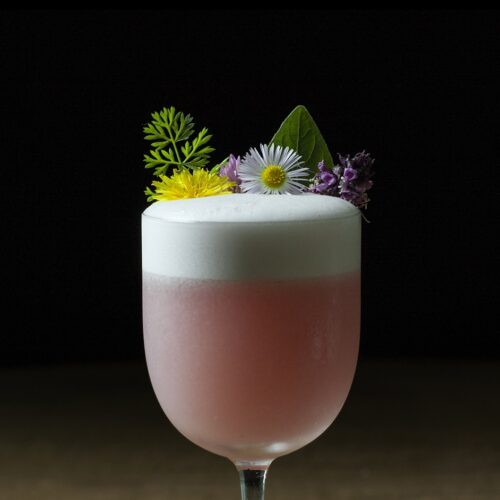
Garden Variety Gin Sour
A summery gin cocktail with foraged herbs and edible flowers.
- 2 oz gin I used Standard Wormwood Distillery's Gin
- 1 oz freshly squeezed lime juice
- 3/4 oz blueberry syrup (1 part water, 1 part sugar, 2 parts blueberries)
- 1/4 oz rosemary & thyme infused oxymel syrup
- 1 egg white
- Absinthe
-
Add less than a 1/4 ounce of absinthe to a chilled cocktail glass and swirl to coat. Discard absinthe.
-
Shake remaining ingredients hard without ice for about 1 minute. Add ice and shake until chilled.
-
Strain into absinthe-rinsed cocktail glass and garnish with tiny edible flowers and herbs.
Let us know how it was!
What Color Does Wine and Fuchsia Make Mixed Drinks
Source: https://www.moodymixologist.com/blog/cocktailians-guide-to-edible-flowers
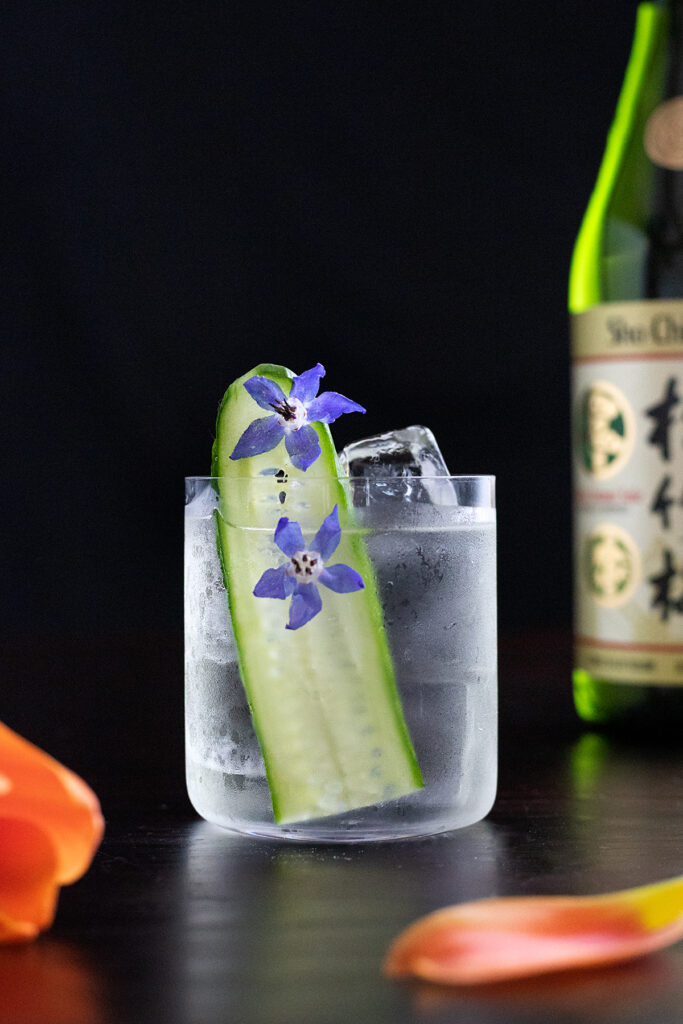


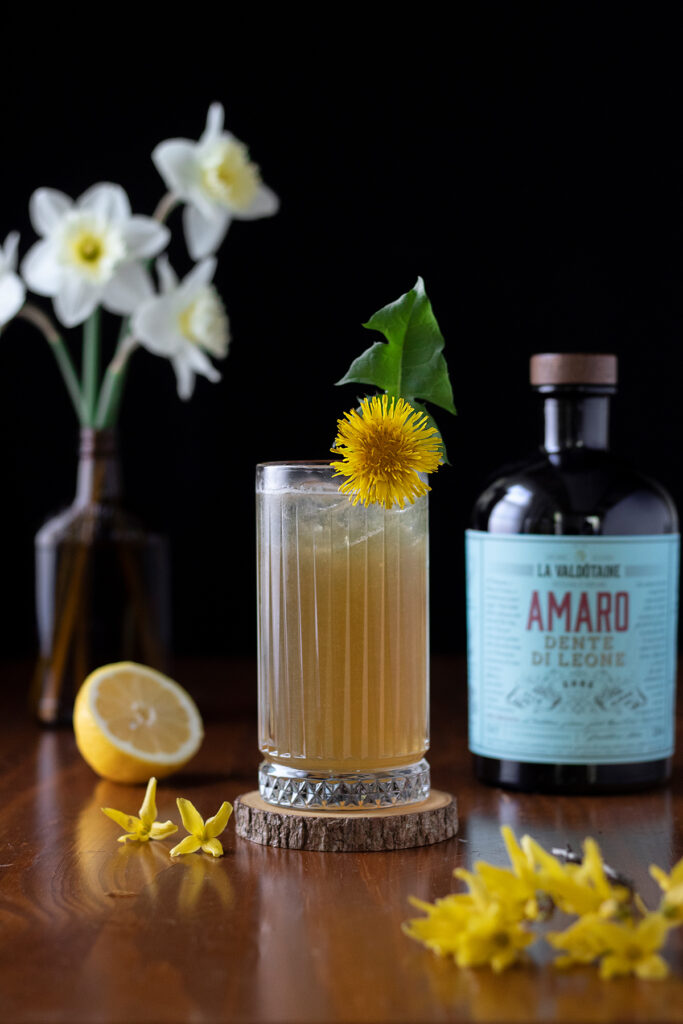




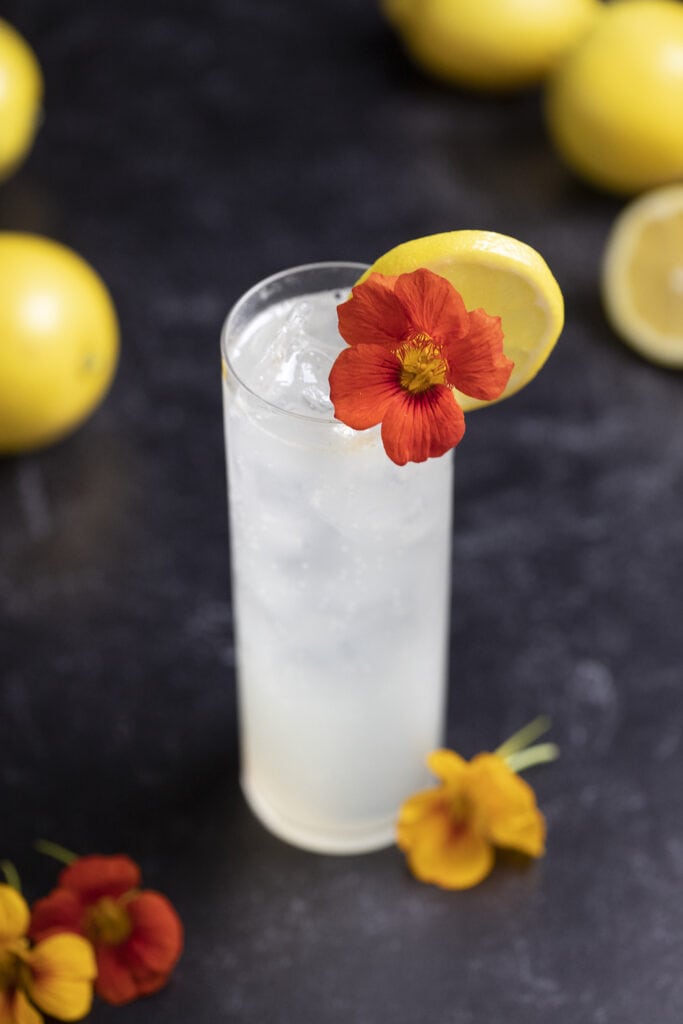
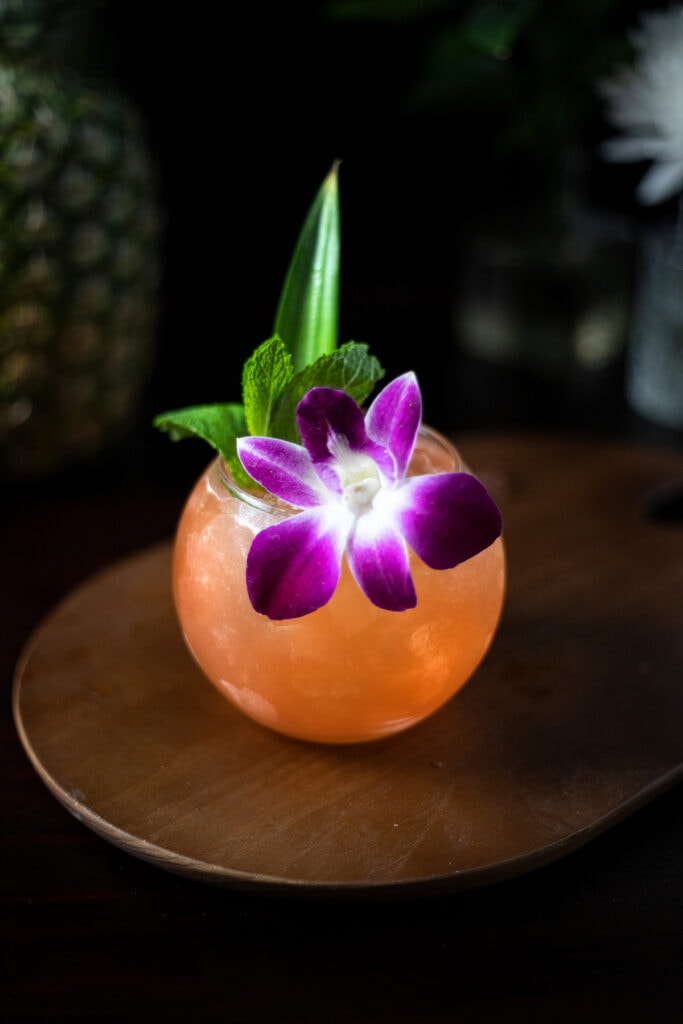






0 Response to "What Color Does Wine and Fuchsia Make Mixed Drinks"
Post a Comment